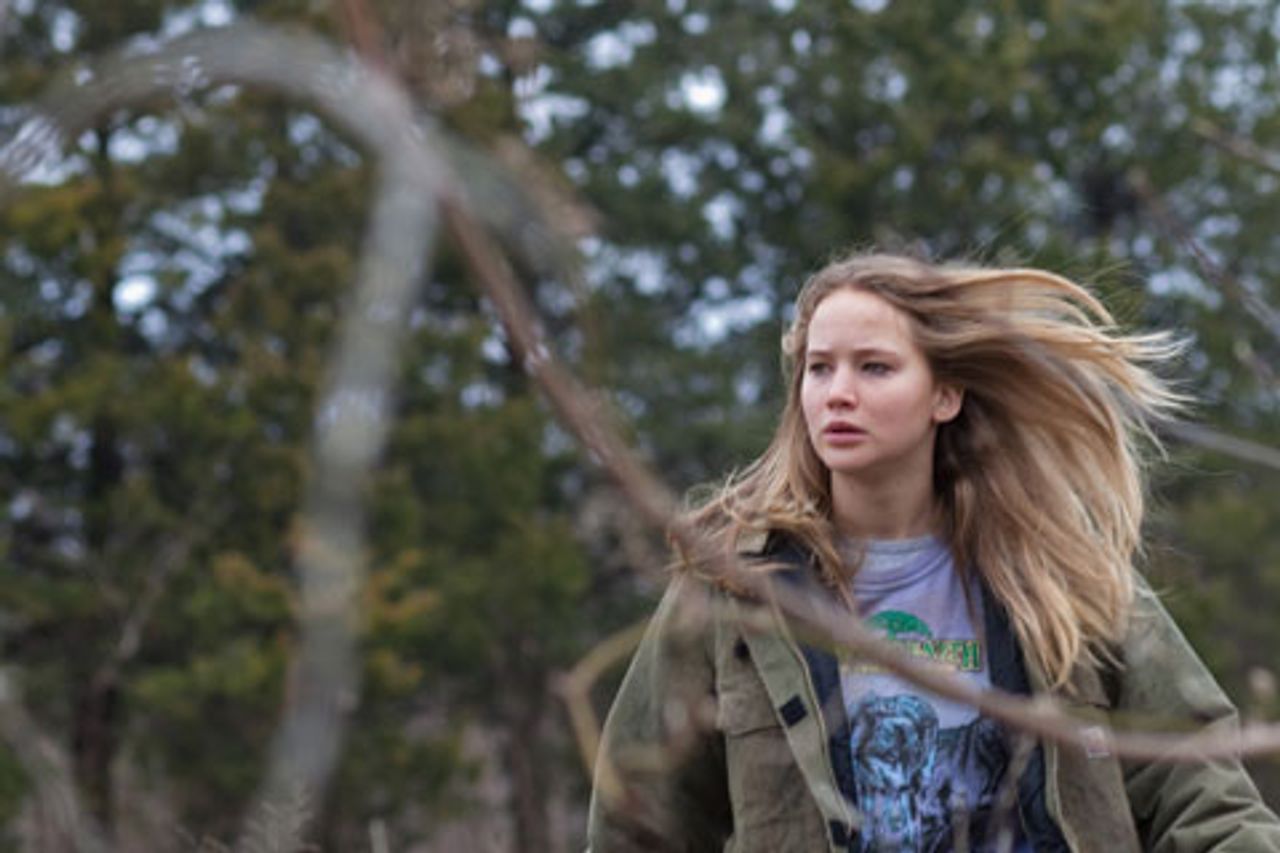Directed by Debra Granik, written by Granik and Anne Rosellini, based on a novel by Daniel Woodrell
 Winter’s Bone
Winter’s BoneWinter’s Bone is a remarkable work, with stunning imagery and a good dose of social insight.
Seventeen-year-old Ree Dolly (Jennifer Lawrence) is forced to raise her younger brother and sister on her own in impoverished rural Missouri. Her father Jessup, a frequent methamphetamine cook, is rarely around, and her mother is near-catatonic for unspecified reasons. One morning, a sheriff comes to the front door seeking Jessup, who has put his house and land up as bail for his latest arrest. If Jessup fails to make his court date, the family will be forced out of their house within a week.
This begins Ree’s odyssey among the meth-ruined lives of her nearby extended family. Most try to get her to just accept the home seizure rather than snoop around in their criminal enterprises. Some insist Jessup must be dead. Through Ree’s determination and lack of any other options, she presses on into ever more dire situations, gaining an ally in her terrifying, if not wholly believable, uncle, Teardrop (an excellent John Hawkes). Dale Dickey, formerly of the sitcom My Name Is Earl, also turns in a standout performance as a terrifyingly protective matriarch.
The film stands in sharp contrast to typical Hollywood bombast and manages to remain genuinely gripping throughout while remaining strongly grounded. While many filmmakers would opt for a degrading, dehumanizing spectacle, director Debra Granik treats characters as real, sympathetic, contradictory human beings, and the handling of Ree’s journey (mostly on foot) lends the looming sense of dread a frightening immediacy.
The imagery and character backgrounds also ground the film in the rural meth epidemic, which has had superficial, sensationalized (and suburbanized) treatments in 2002’s Spun and the ongoing series Breaking Bad. For the Midwest and rural areas in particular, meth has had a tremendous impact over the past 30 years, exploding in usage in the 1990s. In addition to impoverishing and ruining the lives and health of its users, methamphetamine has formed a major component of the “war on drugs,” directly encouraging the expansion of police powers. It affects primarily the worst-off layers of the working class, many of whom synthesize the drug in converted home “labs.”
This amateur chemistry frequently results in a highly toxic final product and carries a high risk of explosion. One particularly gut-wrenching scene showcases an exploded meth house, where one character describes how the land has been rendered chemically uninhabitable without the kind of cleanup nobody can or would pay for. Physical addiction has taken its signature toll on many characters’ emaciated bodies. The film also implies that in this particular area, the first few to deal in meth reaped a small fortune, but by this time so many in the area prepare it that the trade no longer represents a viable income for even a few.
Indeed, there is no viable income for any in the area, especially for students, who face omnipresent military recruiters dangling the promise of escape. Ree tries at one point to sign up, hoping that her signing bonus can be used to pay off Jessup’s bail. Having hired an actual military recruiter for the part, the film can only go so far in indicting this phenomenon.
Winter’s Bone has a keen awareness of the prospects facing millions in the US and billions around the globe. The characters all share the unspoken awareness that their lives are slowly circling the drain, with many on their way to losing everything they have. The best possible outcome will provide only temporary relief in a thoroughly broken social structure.
